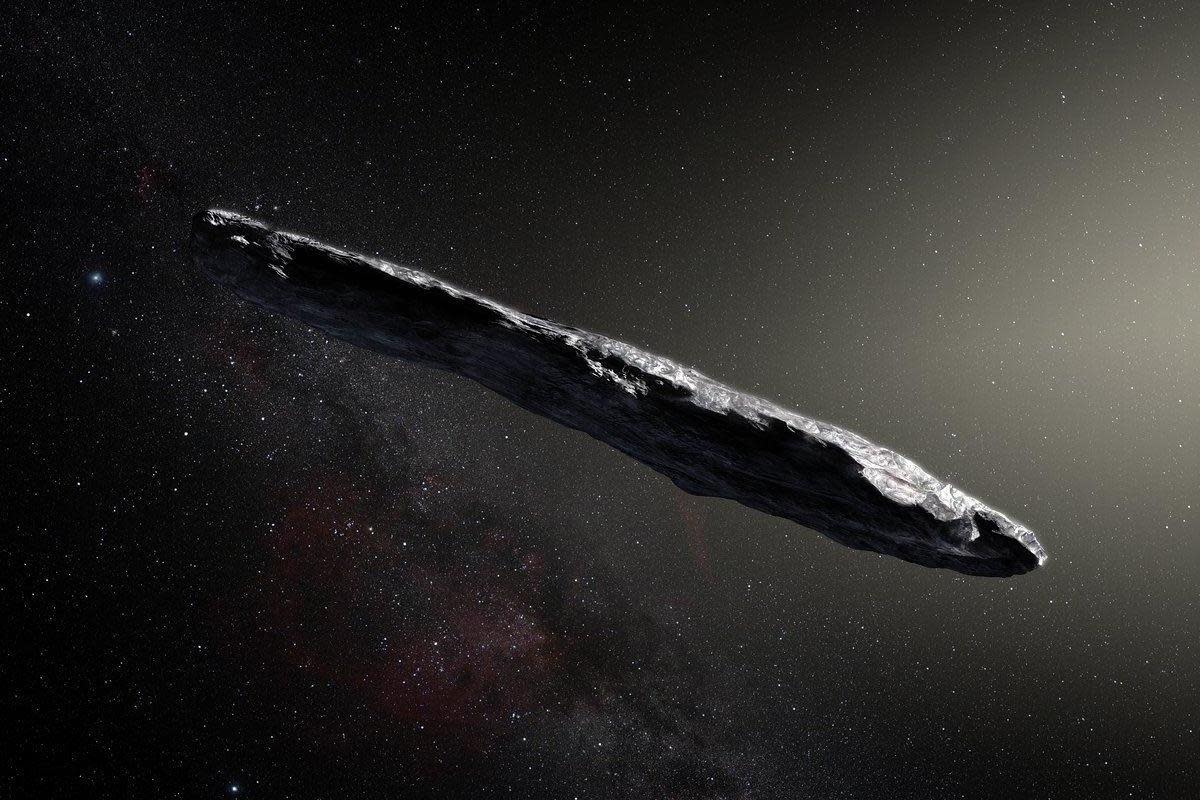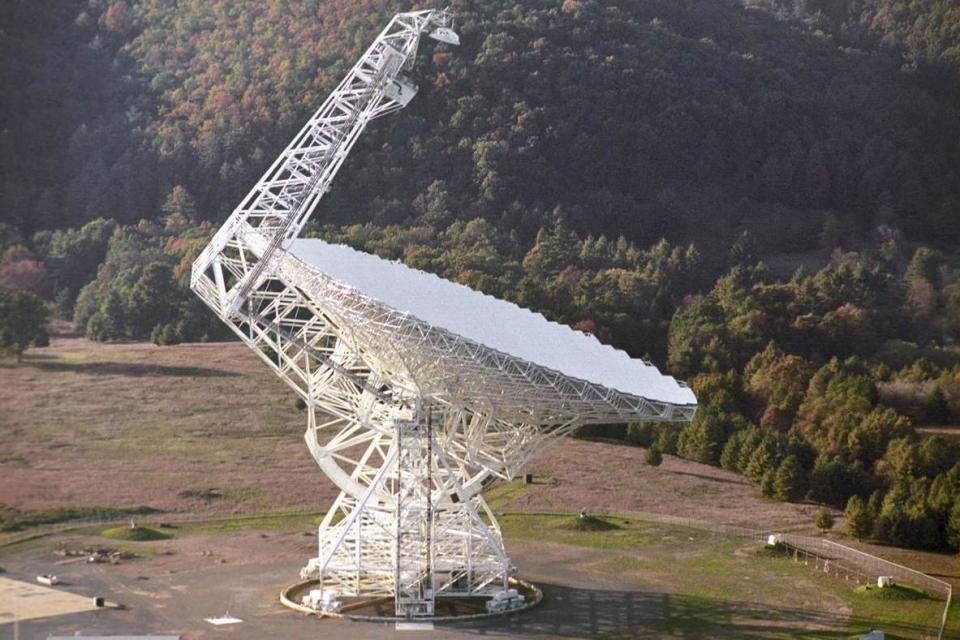Oumuamua: Scientists find no signs of alien life in first scans of space object

Scientists analysing the huge cigar-shaped object currently hurtling past Earth have found no signs of alien life from initial scans.
The celestial body - named Oumuamua - was scanned for radio signals after its unusual shape prompted scientists to consider the possibility it could be an alien ship.
Researchers at SETI, the Search for Extra-Terrestrial Intelligence, used a telescope in West Virginia to listen in on the body.
A statement from the £75 million project said that while monitoring and analysis of the data continues, initial signs are that there is "no evidence of artificial signals emanating from the object".

The Green Bank telescope - the largest fully steerable radio telescope in the world - "listened" to the object across four radio frequency bands spanning one to 12 gigahertz and accumulated more than 90TB of data in two hours.
The first of the four bands has been analysed and has been made available for public inspection.
Andrew Siemion, director of Berkeley Seti Research Centre, said: "It is great to see data pouring in from observations of this novel and interesting source.
"Our team is excited to see what additional observations and analyses will reveal."
Astronomers from the University of Hawaii spotted Oumuamua - named after the Hawaiian term for "scout" or "messenger" - in October passing the Earth at about 85 times the distance to the moon.
It is the first object discovered in the solar system that appears to have originated from another part of the galaxy.
Although thought to be an asteroid, Oumuamua's elongated cigar shape hundreds of metres in length but only one tenth as wide is highly unusual for a typical space rock.
Travelling at up to 196,000 mph, the object's high speed also suggests that it is not gravitationally bound to the sun but is destined to head back out of the solar system.
The object is currently about two astronomical units (AU) from Earth, or twice the distance between the Earth and sun.
Breakthrough Listen aims to survey a million nearby stars and 100 nearby galaxies looking for alien signals.
Since the 1960s, there have been more than 98 Seti projects around the world, none of which have turned up any convincing evidence of extraterrestrial civilisations.

 Yahoo News
Yahoo News 
